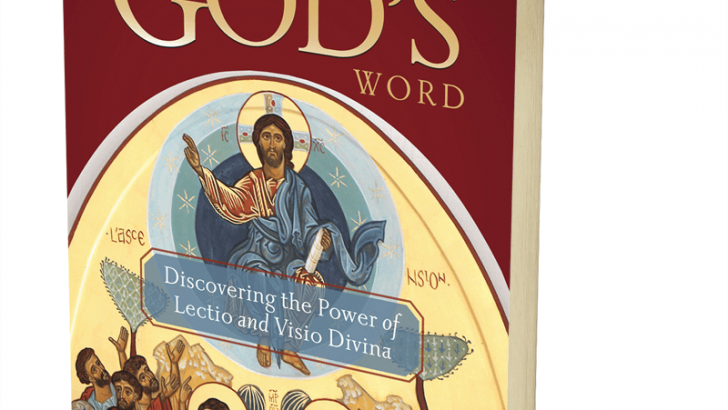Transformed by God’s Words: Discovering the Power of Lectio and Visio Divina
by Stephen J. Binz, with icons painted by Ruta and Kaspars Poikans
(Ave Maria Press, £11.99; distributed by Alban Books)
This book represents an interesting trans-Atlantic co-operation between an American writer and two French based artists.
Stephen J. Binz is a popular Catholic speaker, biblical scholar, psychotherapist, and an award-winning author of more than 40 books in biblical theology, commentary, and spirituality, which have proved immensely popular.
Ruta and Kaspars Poikans make icons, frescoes, mosaics, sculptures, and liturgical furnishings in their Saint Luke Workshop at Notre Dame des Dombes Abbey in France. This atelier was created by the local community and the Kaspars in 2002.
In an environment devoted to ecumenical activity, for them the icon is equally an instrument at the service of Christian unity, for it is a tradition held in common now by all the churches in the 21st Century, as protected and developed by “our brothers in the Oriental Church”, according to the Kaspars
Devotion
This is a book to promote personal devotion. It opens with three essays which outline the ancient tradition of lectio divina, a devotion focused on the words of the Scriptures. The second essay deals then with the Orthodox tradition of experiencing God’s word through icons, traditional images to which an artist will now give a personal expression. The final essay discusses the actual experience of trying to combine these.
The essential feature of this book are the icons. As printed here the colours are muted and the images softened, making their impact on the page less striking than the actual paintings must actually be. But this is only a small, perhaps over arty, point.
These images of some 20 scenes from the life and passion of Jesus and his mother reimage episodes that have been familiar from childhood. But because they present them in an Oriental manner they seem to evoke the historic reality in a new way.
I was reminded of the Spiritual Exercises in which St Ignatius tells that ‘el primer preámbulo es composición viendo el lugar ‘. This ‘seeing the place’, or ‘composition of place’ as it is referred to in Jesuit tradition, is akin to what the icons supported by Stephen Binz’s text are trying to do here.
In promoting spirituality readings require the exercise of intellect – this cannot be avoided, even if it leads to understanding. But in contemplating the icons something more ancient is evoked, some more ancient way of seeing the world and its nature almost instinctively by eye.
Many readers seeking to deepen their spirituality in new directions will find this beautifully produced book a great aid.


 Peter Costello
Peter Costello